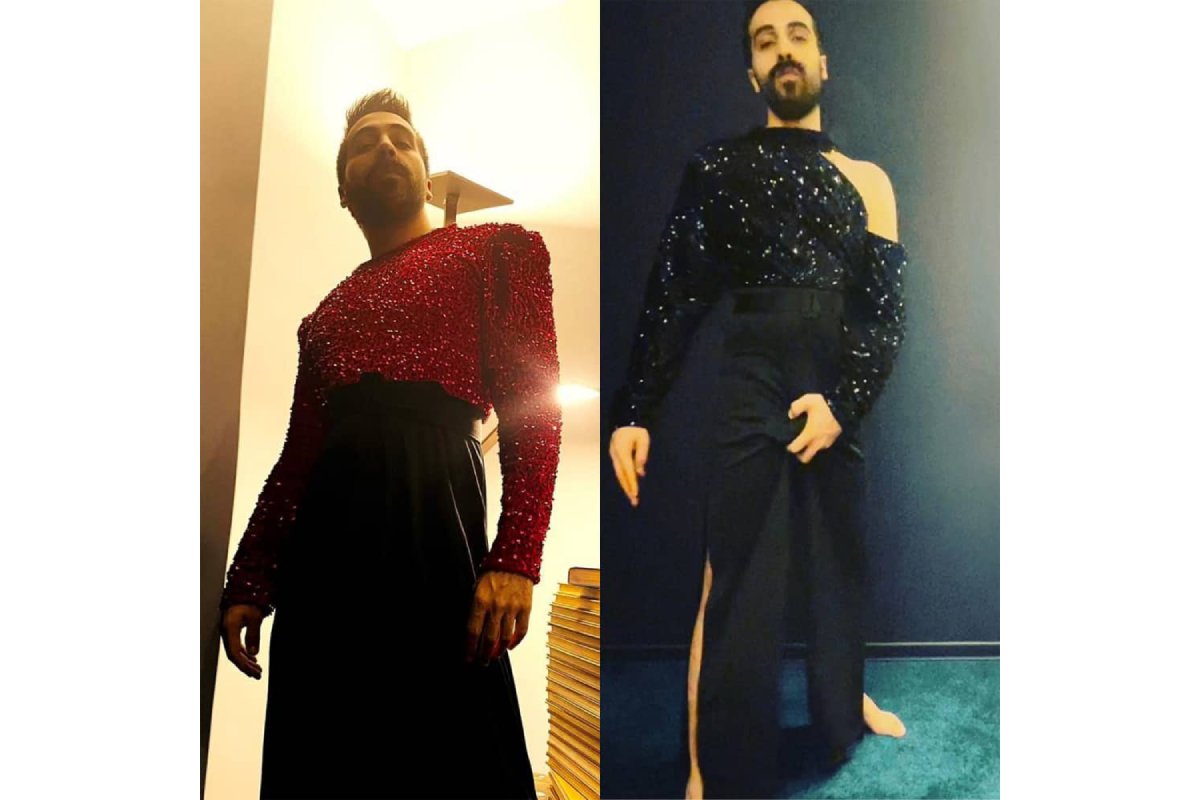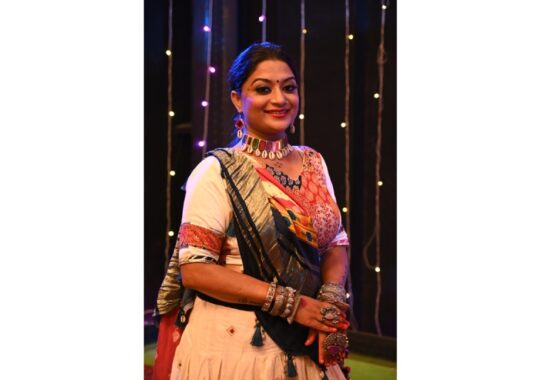Salar Bil Conceptual, Surreal and Dadaism fashion artist of Tehran to 2020’s pop, erotic and sex art explained about surrealism to nowadays on his instagram and made revolution online before protest of Iran, with the alter-ego from Bilehsavarchian explained ” The whole story of suppressing feminism in Iran is not to chant, believe then act. We are living in the days when the opponents of feminism have declared in their ubiquitous platforms that feminism is nothing but a western phenomenon, monopolistic and the enemy of men.
The point is that in order to be antagonistic, passivity arises
Feminism was born in the bed of discrimination to be on the opposite front, although it spent its infancy in the West, but it was able to expand its language and boundaries, transfer, and grow all over the world. Singular feminism splintered into a thousand pieces to give birth to plural feminism, feminisms that were more capable of responding to differences, distinctions, points of view, and heterosexual interpretations, but are now open to colorful genders and orientations. Once upon a time, feminists were only responsible for humans, but now they know very well that human and non-human life are connected to each other and the exploitation of one leads to the annihilation and destruction of the other. Feminisms are changing-and must be–because our world, forms of distinction, systems of power, individual and collective needs, and our environment are changing. Therefore, it is time to speculate about the possible future of feminism, to create feminisms that have more capacity to meet the needs and necessities of the present and the future, the feminism of the future is the “other” feminism. A kind of feminism that tries to be more inclusive and to strengthen its links with other liberation movements and activists, from anti-capitalist, anti-imperialist, anti-racist and anti-ethnic movements to environmental activists and LGBTQ+ activists, which I cover. Given, the future feminists will not only fight for women from different social classes, with different races and different sexual orientations, as well as women with physical disabilities, but they will also take a step beyond their borders and fight for more than women’s issues. Both Western and non-Western worlds, and in a time when with neoliberal and capitalist policies, every value has been reduced to market value.” Diane Pernet wrote about the forefather of conceptual fashion in A Shaded View on Fashion Film from Anti-capitalism to Anti-Iranian regime! Sophie Fontanel In a Vogue France article called him the Godfather and and an important thinker in politics, before that Sophie Fontanel wrote a complete article about him in L’Obs which is related to the left wing and care about issues such as politics, culture, literature and also issues related to Middle East countries. Tim Blanks also in Fashion in the Middle East, Optimism and Transformation called him the predecessor of Iran’s perceptual and a unique author. Bil’s attention to ecosystem since his Glamour of Bandar collection is clear since 2016 he made organic fabrics as much as he could, Unless he makes sustainable clothes for the idols because he is more into glam rocker costume for stage and idols, He also opened conversation on his journal about: Pierre Bourdieu (1975, 23) rightly notes Barthes’s rigid formalism and his forced transposition of linguistic models to extralinguistic domains, further arguing that Barthes’s mode of analysis simply uncritically reproduces common-sense assumptions in an academic register. For Bourdieu, Barthes remains part of the celebratory apparatus that creates the phenomenon of fashion; for him, a truly critical approach would reveal and problematize the underlying mechanisms of capitalist production and class reproduction, Further, in terms of the understanding of fashion itself, Barthes’s rigid, structured semiological grid is of minimal usefulness, for the operations of signification Barthes describes could be attributed with equal persuasiveness to any extralinguistic signifying system. That he chose fashion as his object seems merely incidental. In contrast, for Jean Baudrillard (1976), fashion is the central logic of our “consumer society,” “the most superficial game and the most profound social form-the inexorable investment of all domains by the code” (“le jeu le plus superficiel et … la forme sociale la plus profonde-l’investissement inexorable de tous les domaines par le code” ) (Baudrillard 131). In L’echange symbolique et la mort, Baudrillard is in a transitional phase of his thinking. He has problematized the Marxist categories of production and consumption which were foundational in his earlier work and is on the way to articulating fully the notions of simulation and the hyperreal that animate his later theorizing. At this point, Baudrillard associates production with a phase of history defined by the Industrial Revolution (77). In its place, he argues, we have entered a new regime of simulation, a world where the referential and the real dissolve in an enchanting play of floating signs that refer only to each other. Fashion embodies the processes of simulation and the rule of the code. Rather than the “real” itself, Baudrillard argues that fashion creates a world of representations or models of the real. Fashion becomes the ”jouissance de l’arbitraire,” at once exceeding the purely economic domain even as it remains the highest expression of the workings of commodity capitalism (142). According to Baudrillard, fashion invites censure not because of its sexual element-indeed, he argues that fashion paradoxically desexualizes subjects into mannequins-but because it interrupts the economic principle of utility, the puritanical valorization of use and function. Fashion’s power is precisely that of the “pure sign that signifies nothing” (“signe pur qui ne signifie rien”) (144). For Baudrillard, fashion is a totalizing logic permeating what he calls at this point “modernity” and will later call “postmodernity.” Consequently, there is no way to subvert fashion, “for there is no reference with which to place it in contradiction (its reference is itself)” (“parce qu’elle n’a pas de referentiel avec lequel la mettre en contradiction (son rejerentiel, c’est ellememe)”) (151). Reacting against fashion simply reproduces the principles of its code; fashion cannot b etranscended. Instead, the project must involve “a deconstruction of the form of the sign of fashion and of the very principle of signification, just as the alternative to political economy can only be in the deconstruction of the commodity form and the very principle of production” (“une deconstruction de la forme du signe de mode, et du principe meme de la signification, comme l’alternative d l’economie politique ne peut etre que dans la deconstruction de la formelmarchandise et du principe meme de la production”) Baudrillard’s characterization of fashion displays his penchant for hyperbole, particularly in his insistence on fashion as the enchantment and jouissance of the code, a fairyland of floating signs; this emphasis on simulation and models will spin off in ever more grandiose formulations in later work. Nonetheless, he does argue convincingly that fashion is an exemplary instance -the exemplary instance- of the logic of contemporary society, a logic that cannot be transcended. Baudrillard’s formulations are useful and prescient, articulating what will become a standard premise of a poststructuralist politics: that there can be no outside space of transcendence and that a political project must depend in part upon problematizing the foundational assumptions constituting the tacit, unspoken-hence unquestioned-rules of the game. In Distinction (1984) Pierre Bourdieu combines a Durkheimian preoccupation with systems of classification with a Marxist concern for systematic inequality and class struggle. In this study of taste and consumption, he seeks to give “a scientific answer to the old questions of Kant’s critique of judgment, by seeking in the structure of social classes the basis of the systems of classification which structure perception of the world and designate the objects of aesthetic enjoyment” (xiii). Bourdieu’s project is to demystify the claims of high culture, showing how the supposedly transcendent domains of refined taste are constituted through a system of class distinction, permeated by the logic of cultural and symbolic capital. Fashion, music, political orientation, leisure, lifestyle, tastes in food, types of dwelling, and interior decoration become sites where class distinctions are articulated and reproduced. Basing his project on a comprehensive survey of over 1,200 respondents, Bourdieu convincingly analyzes the functioning of taste and its relation to social class. He utilizes the standard methodologies of social science to impressive effect, persuasively mapping this relationship through discursive analysis supplemented with charts, photographs, statistical tables, interviews, excerpts from journals, and advertisements.
Bil continued: “A Comme des Carçons representative explained, “The goal for all women should be to make her own living and to support herself, to be self-sufficient. That is the philosophy of her clothes. They are working for modem women. Women who do not need to assure their happiness by looking sexy to men, by emphasizing their figures, but who attract them with their minds” (Coleridge 1988,89). Indeed, Kawakubo insisted fiercely on that independence: “I don’t have the slightest conception of depending on someone, of saying, ‘Help me.'” She elaborates elsewherethat she does not design with a particular kind of person in mind; rather, the concern is with the feeling the clothing imparts: “To put it in extreme terms, I want to value the feeling of freedom that comes when someone wears the clothes, something psychological and spiritual rather than the actual feel and fit of the clothing” (1988). The refrain of newness, of freedom emerges strongly in Kawakubo’s discourse. At one level, such statements could be taken as typical strategies mounted by new designers, for Bourdieu perceptively argues that the necessity to assert marketable difference often takes the form of dynamism, modernity, and subverting convention, Benjamin’s artwork essay has been seminal for art history and media studies, but it has not, as yet, penetrated too deeply into fashion studies. What is for sure is that the same question that haunts media theorists holds as much for fashion theory, namely, had Benjamin been alive today, what would he have made of the dense hyper-real worlds of representations?
This is a particularly pertinent question for fashion studies, given the slippages that have occurred in recent decades between art, fashion and popular culture. His unfinished Arcades Project emphasises the importance of fashion as a project of modernity whose essence is transitory and contingent and is closely linked to the ephemeral and the present.
We know this because the majority of Konvolut B is dedicated to the topic. A closer reading of the manuscript reveals the importance that Benjamin placed on fashion as a philosophical tradition and as an expression and interpretation of the lived experience of everyday city life.
In the last two decades or so, we have been faced with the paradoxical situation where the popular image also has the capacity to be ‘critical’ and where some fashions convey as much as art objects. This is surely a symptom of a new relation we have to time.
We now inhabit a present that we ambiguously, unimaginatively, call ‘the contemporary’. Yet this permanent present is saturated with the histories whose dialectical relations are the image. The most artful of contemporary fashion reminds us that the historical relations within stylistic inspiration serve to offer us a space where images exist for the sake of what is yet to come.





